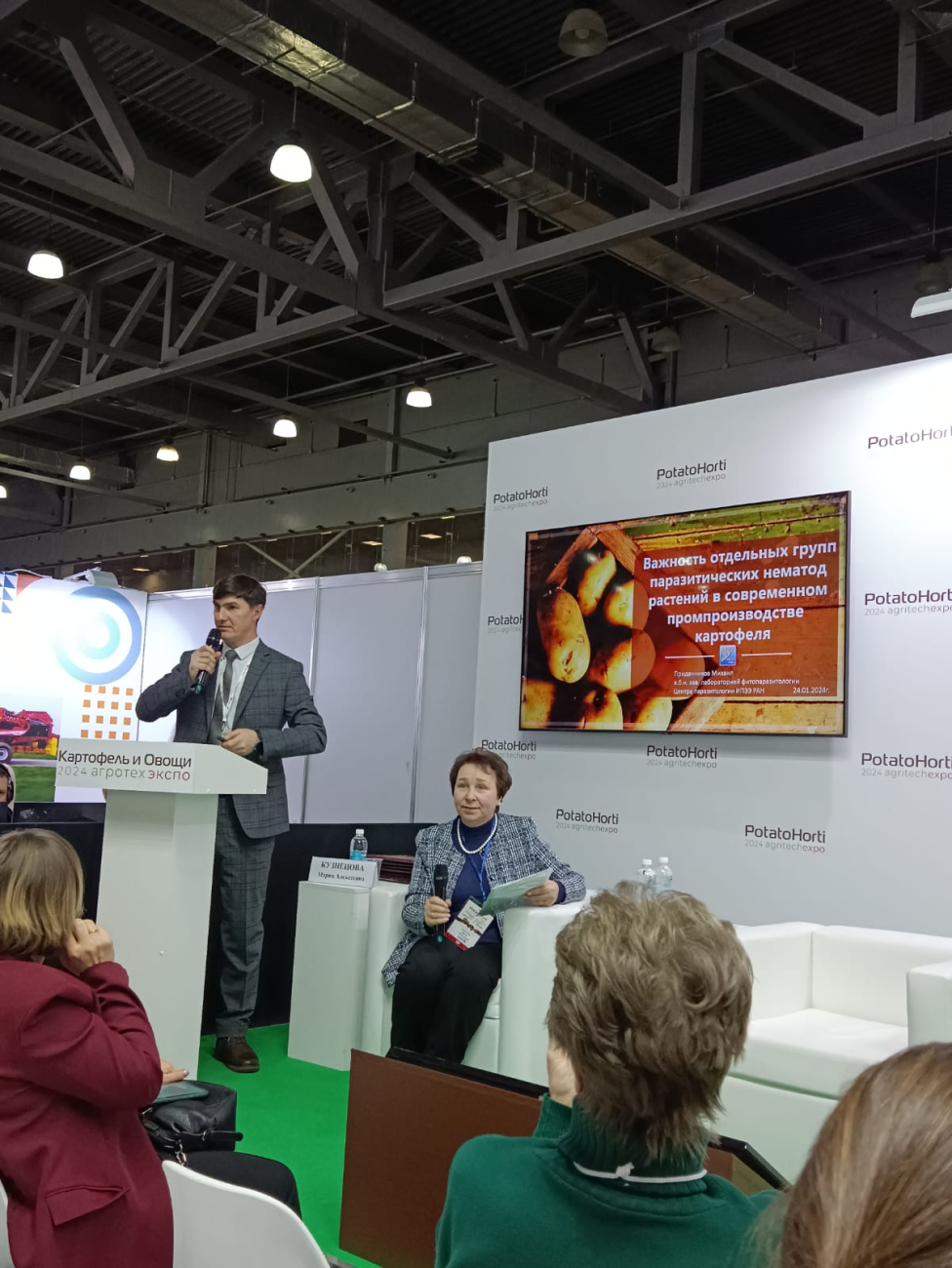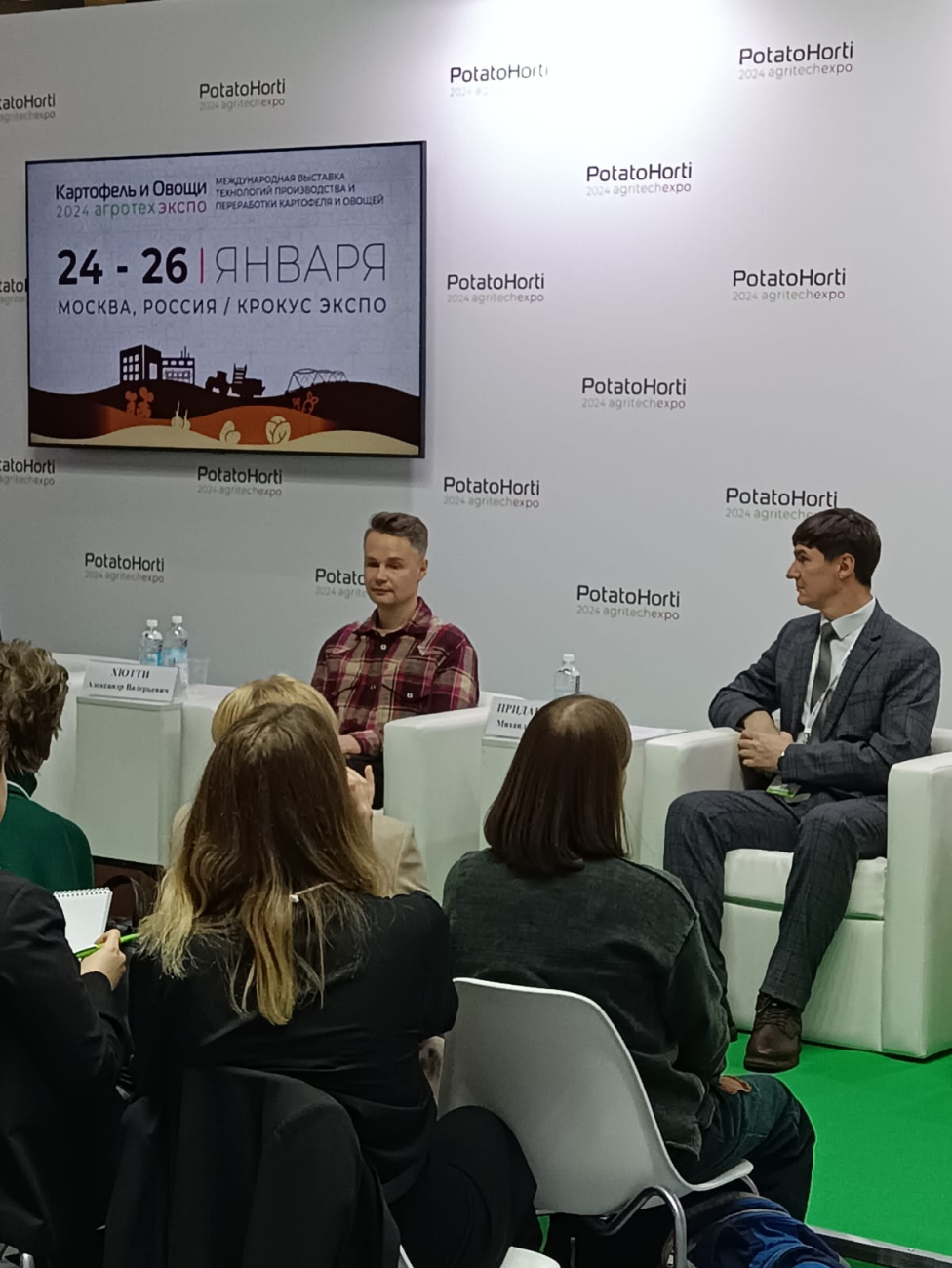
On January 24-26, 2024, as part of the International Agro-Industrial Exhibition of Technologies for Agricultural Professionals “AGROS2024expo”, the International Exhibition of Technologies for the Production and Processing of Potatoes and Vegetables “Potatoes and Vegetables 2024 AGROTECH EXPO” was held. The exhibition brought together in one place innovative solutions for all stages of production, processing and marketing of both potatoes and vegetables. The exhibition was attended by investors, enterprise managers and specialists from Russia and neighboring countries involved in the production and processing of potatoes and vegetables.
Deputy Director of the Center for Parasitology of the IEE RAS, Mikhail Viktorovich Pridannikov took part in the exhibition program with a report “The importance of certain groups of parasitic plant nematodes in modern industrial potato production” as part of the Round Table “Science for Potatoes and Vegetables” on January 24, 2024.

The report highlighted issues related to the history of the study of parasitic plant nematodes, which can damage potatoes and cause great losses when growing them. It was noted that in various historical periods the economic importance of some nematodes on potatoes decreased, while the importance of other species increased significantly due to changes in growing technologies and production structure, the introduction of new varieties, new plant protection products and other factors. In the current period, three most harmful groups of nematodes on potatoes have been identified, causing particular concern due to their wide distribution and high harmfulness: potato stem nematodes of the genus Ditylenchus; cyst nematodes of the genus Globodera; root-knot nematodes of the genus Meloidogyne. It is these three groups of nematodes that now require close attention. Three groups of nematodes have also been identified, the harmfulness of which manifests itself only in rare cases, but it is necessary to monitor the spread of these groups of nematodes, especially in farms specializing in the production of seed potatoes.
In his report, Pridannikov M.V. pointed out that reducing the risks of damage to potatoes and other vegetable crops is impossible without the involvement of specialists in the field of phytopathology and agricultural nematology, and invited all interested parties to cooperate.
